Vacheron & Constantin has been in business continually manufacturing watches for over 250 years, a remarkable achievement despite (naturally) quite a few ups and downs. I would not attempt to produce another history of the firm, there are many both fine and easily available, but I would mention a few recent events pertinent to the current watch.
For most of its first two centuries, Vacheron & Constantin was considered part of the absolute elite of factory watchmaking, comparable to Patek Philippe. However, from the 1930s forward the firms fortunes diverged drastically. While PP was anchoring its place in the relatively recent market for wristwatches with its prescient Calatrava line, V&C was being fractured by having to seek outside financing, first through its movement supplier, Jaeger-LeCoultre, then from a manager and director shared by both firms, George Ketterer. The next half-century-plus seems to have been one of slow decline for V&C, not that it produced notably bad products or had no innovations, but certainly its profitability and volume stagnated, and its reputation as one of the greatest houses receded further into memory. Along the way they were purchased by a Saudi sheikh, and then sold a decade later to the South African-controlled Vendome Group. This latter soon became entirely a piece of the Richemont luxury house, where things continued to decline until the arrival in 2001 of Mr. Gunter Blumlein, ex-LVMH.
Mr. Blumlein and Richemont seem to have provided considerable new energy to V&C, a welcome development, and one which likely will increase interest in both their current and their historical production. Interestingly, the watch which captured my interest is from the early 1960s, a time when the firm was well into its decline. Even while Vacheron was steadily losing prestige, it continued to be a premier finishing house, and because of its connections with JLC had access to top-tier ebauches.
The manual-winding watches of the 50s and 60s are of special interest to me because they incorporate a particular ebauche from Jaeger-LeCoultre, probably the most refined and beautiful simple wristwatch ebauche ever manufactured by that premier firm, traditionally a supplier to the greatest houses. I have profiled the associated JLC movements in this article, and I feel they are properly considered amongst the finest such movements ever manufactured. Still, Vacheron & Constantin have worked their traditional magic on these worthy supplies, and the V&C version is even more sublimely beautiful.
My example is from the early 1960s, and has a very unusual one-piece case. The crystal is fitted from the inside, and so the polished "bezel" is very thin and steps down elegantly to the very steep and brushed sides, into which the crown is partially recessed. The case cleanly joins the strongly-sloped lugs, and is an almost-undeard-of 37mm diameter, exclusive of crown, and about 9mm thick, including the crystal, a perfect contemporary-sized dress watch!
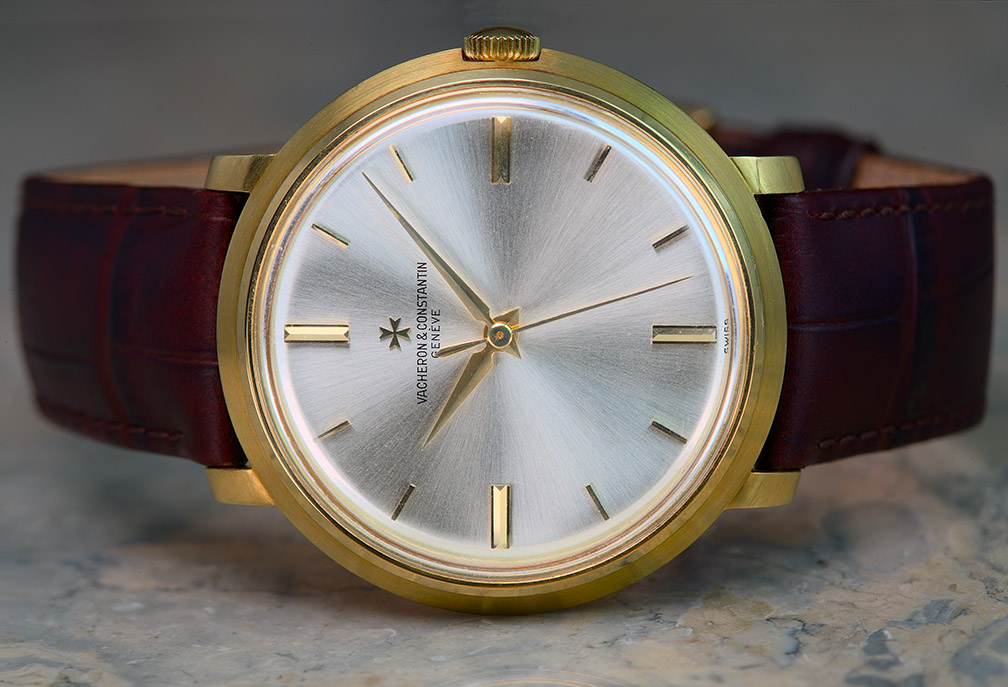
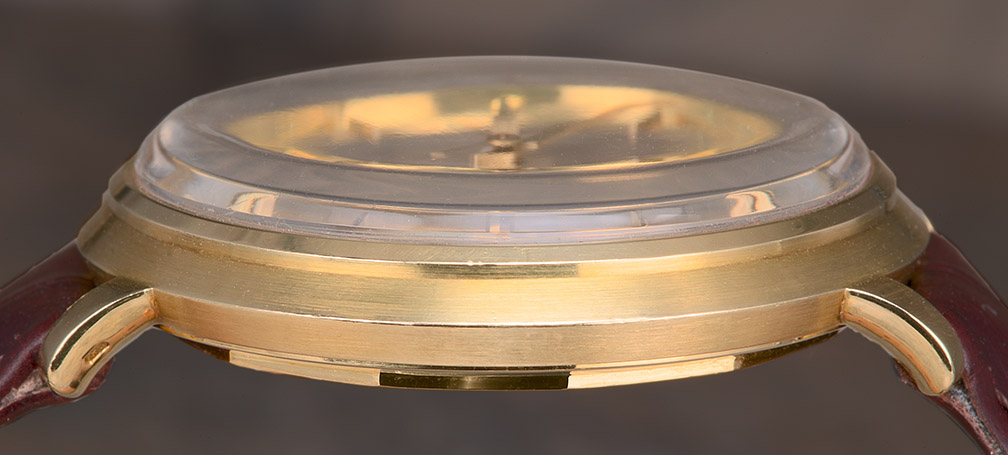
The dial is silvered in a beautiful sunburst pattern, with applied sculpted-gold markers and V&C cross, and alpha hands. The legend is printed in black and otherwise the dial is entirely open.
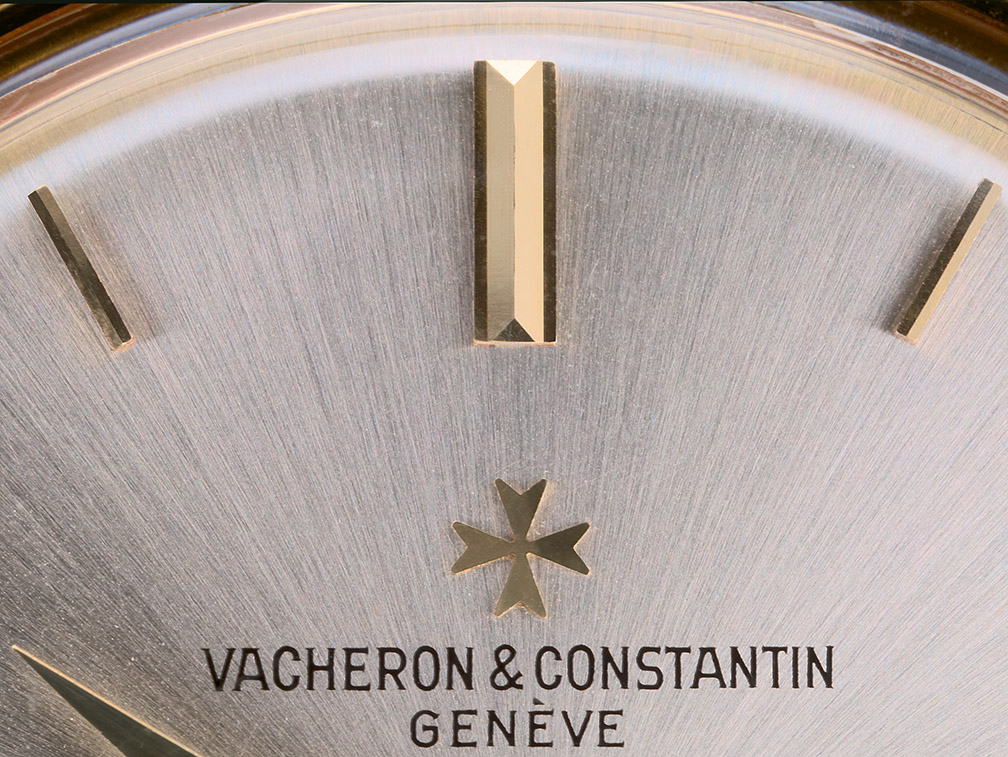
Only at the rear is there an indication of the treasure resting inside, for it is emblazoned "CHRONOMETRE ROYAL". The back screws in, and because it must accomodate inserting the crystal, is so huge that the straps must be removed to safely open the watch!
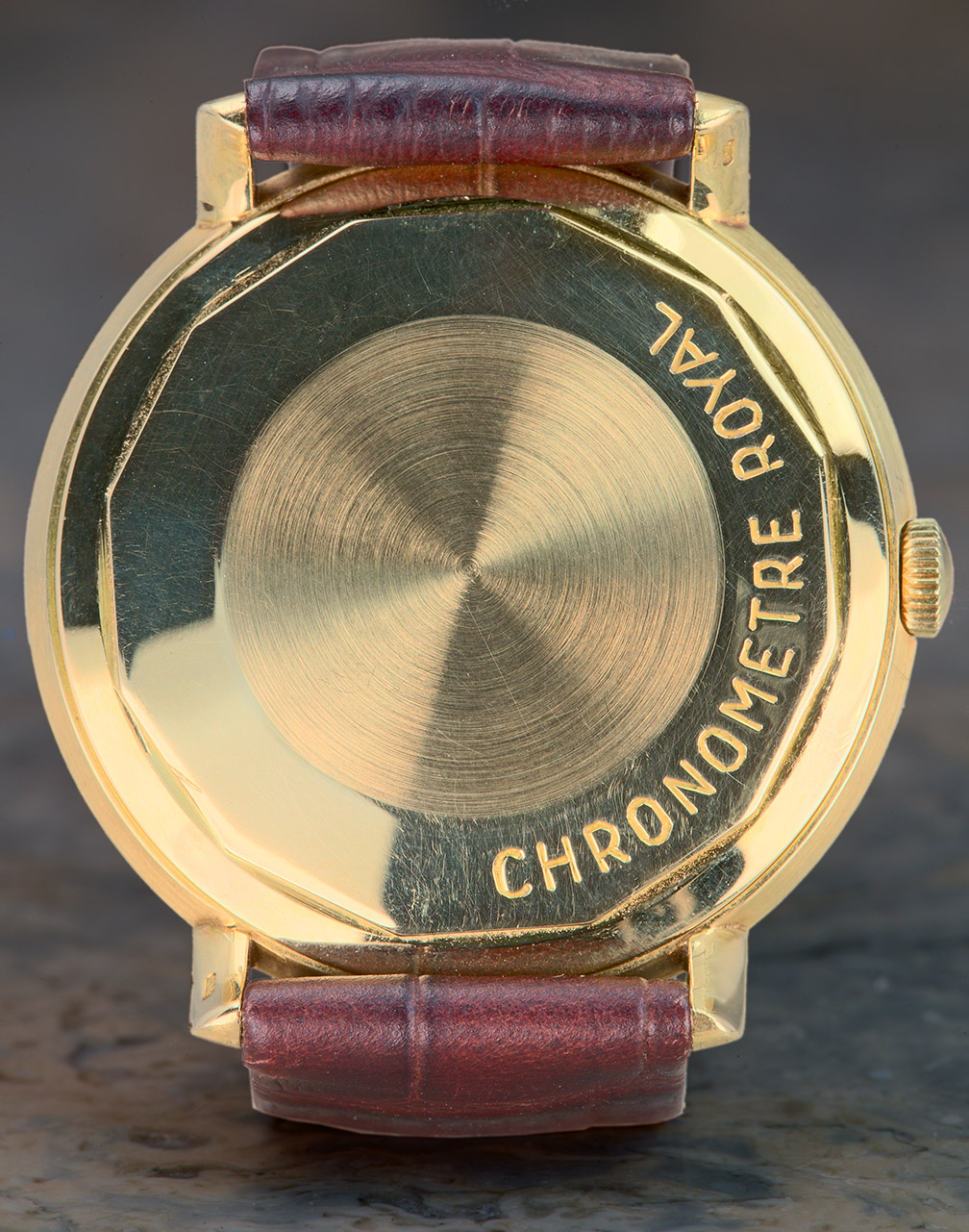
The inside of the back is very neat, with the usual hallmarks and just a few service numbers.
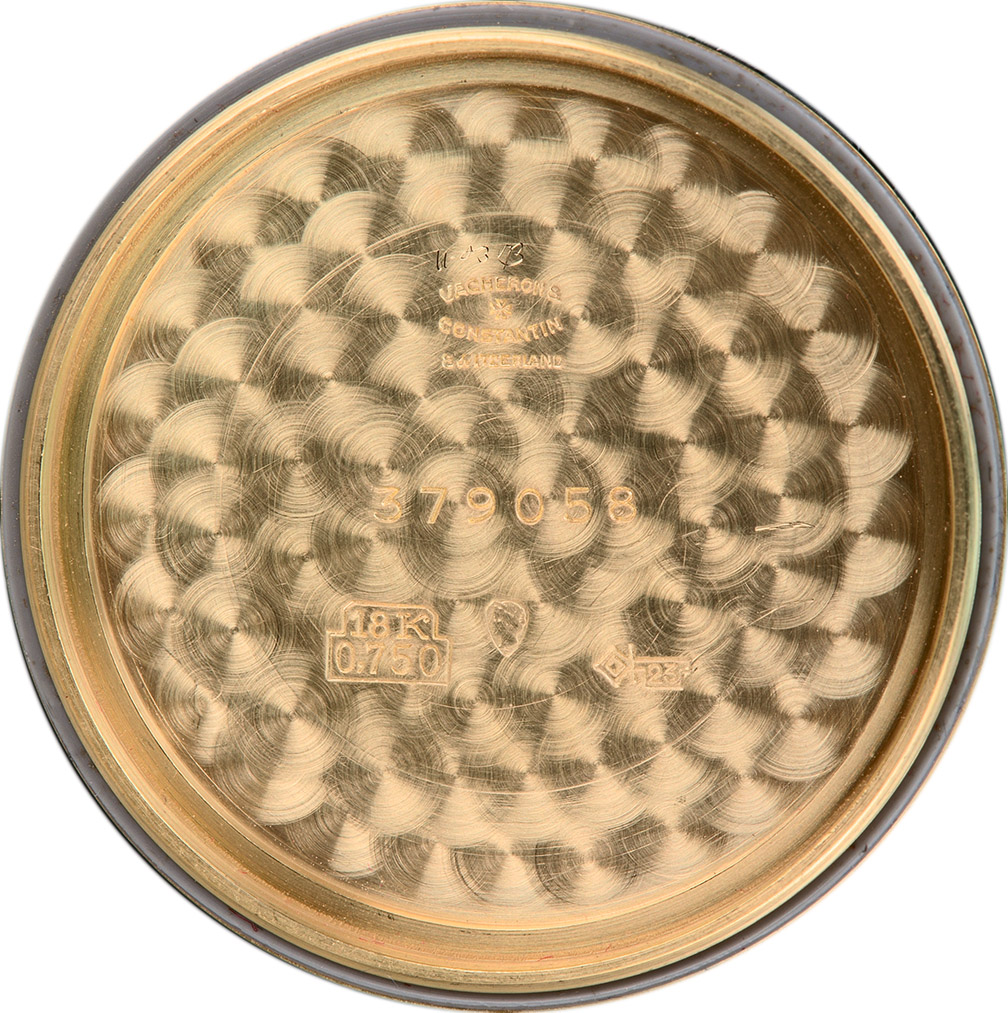
The caliber P1008/BS is constructed from a Jaeger-LeCoultre 4xx ebauche, is 12.5 lignes (about 28.5mm) diameter, and runs at the traditional 5 ticks per second. As noted in the article referenced above, Vacheron has completely reworked the bridges, almost covering the winding wheels and giving the escapement its own cock, complete with black-polished cap. An additional bridge at center accomodates the sweep seconds, and as inscribed the movement is fully adjusted for temperature, isochronism and positions, and bears the Geneva Seal.
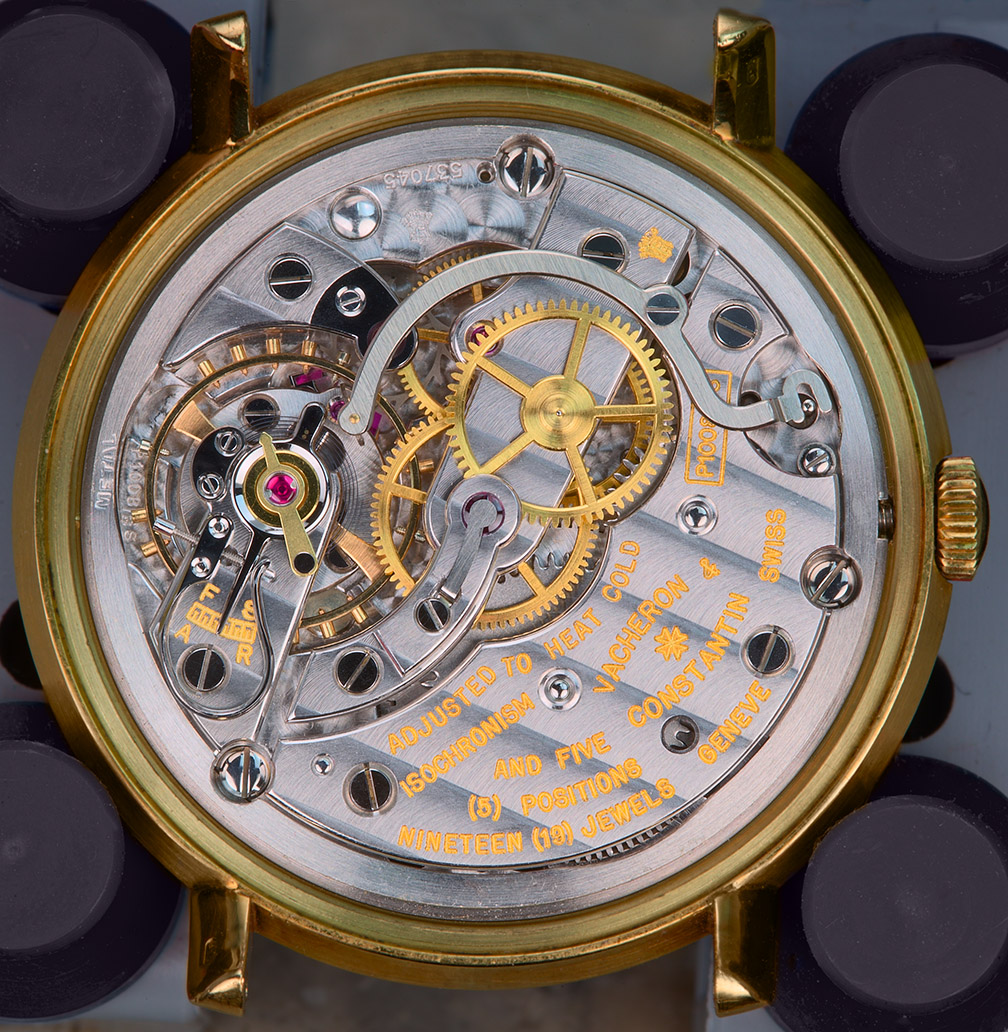
Even after some 40 years, this movement just shines!
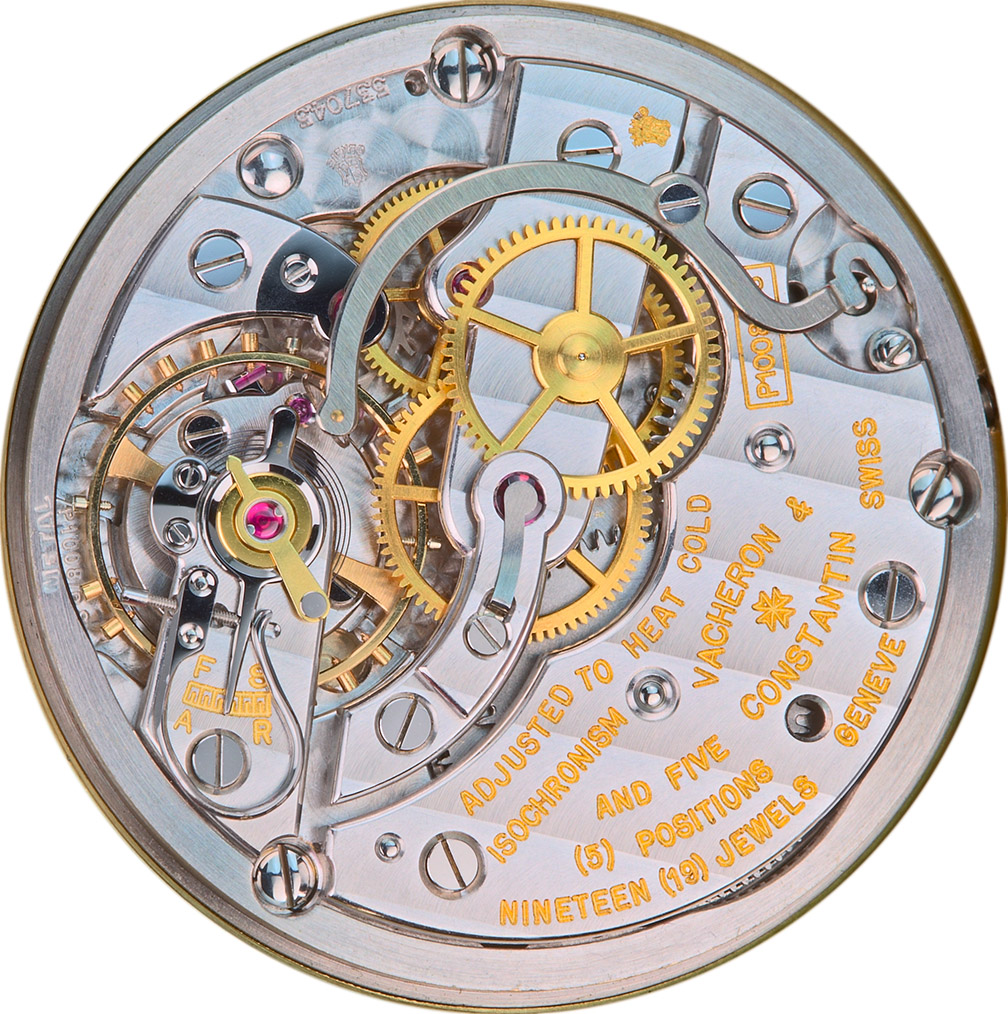
In this picture of the sweep-seconds bridge it is easy to appreciate the beautifully rounded and polished bevels, and the delicately-spoked wheels.
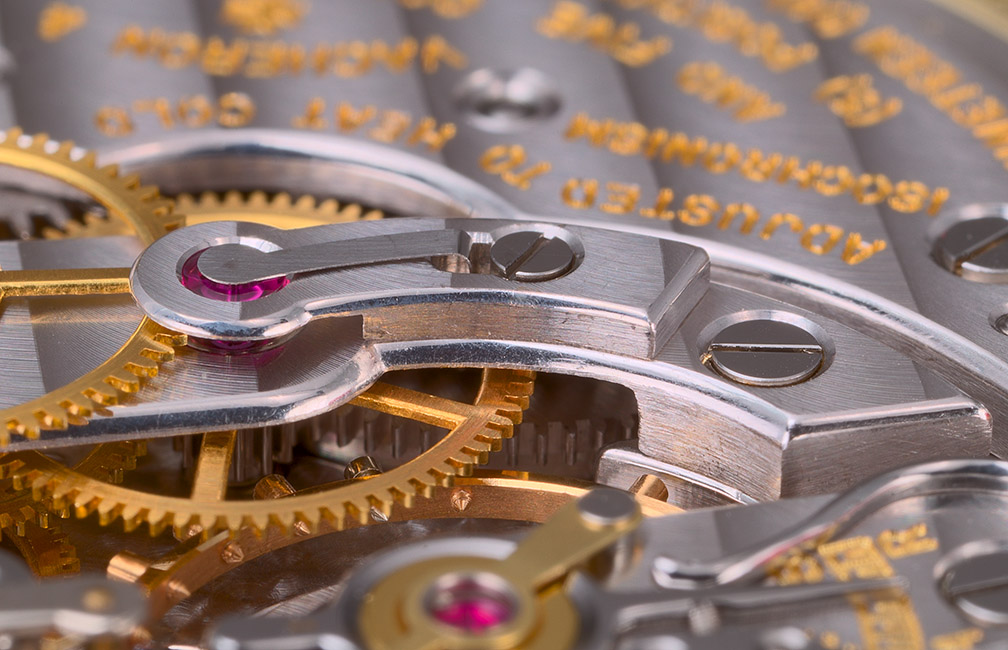
This is the business end of JLC's elegant stop-seconds mechanism. When the crown is pulled the curved arm rotates slightly and this metal loop contacts the balance, stopping the movement. More beautiful finishing is apparent, especially the polished cap.
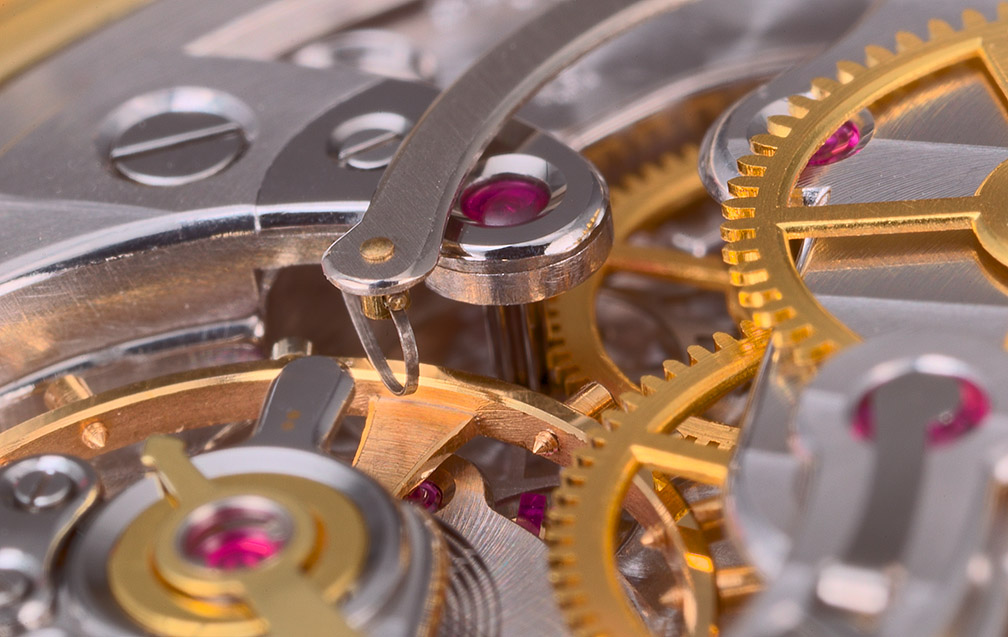
Near-perfect Geneva stripes, black-polished screw with beveled circumference and slot, gilt engraved legends:
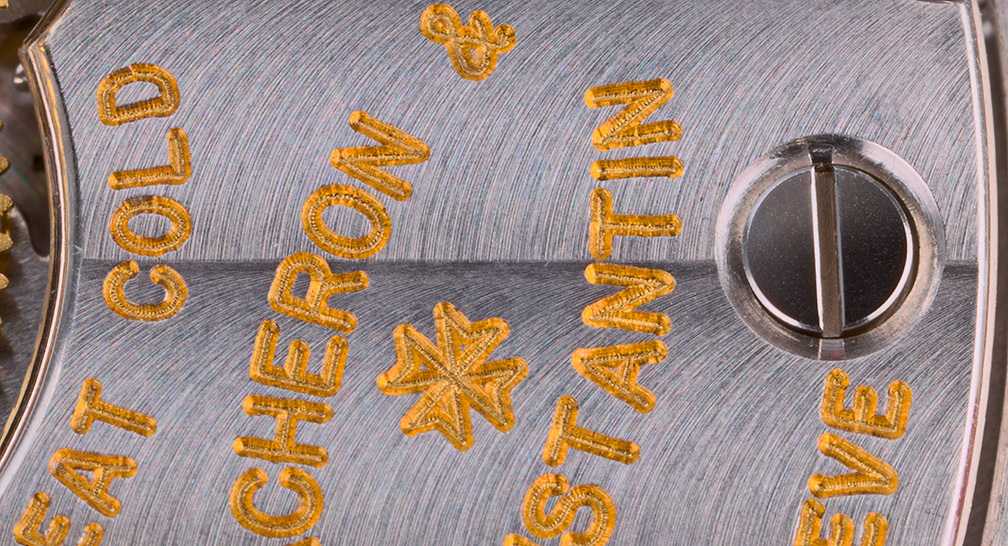
Incredible sculptured and polished swan's-neck regulator and cap for the Breguet spring-end! This is some of the finest work I have seen on any watch.
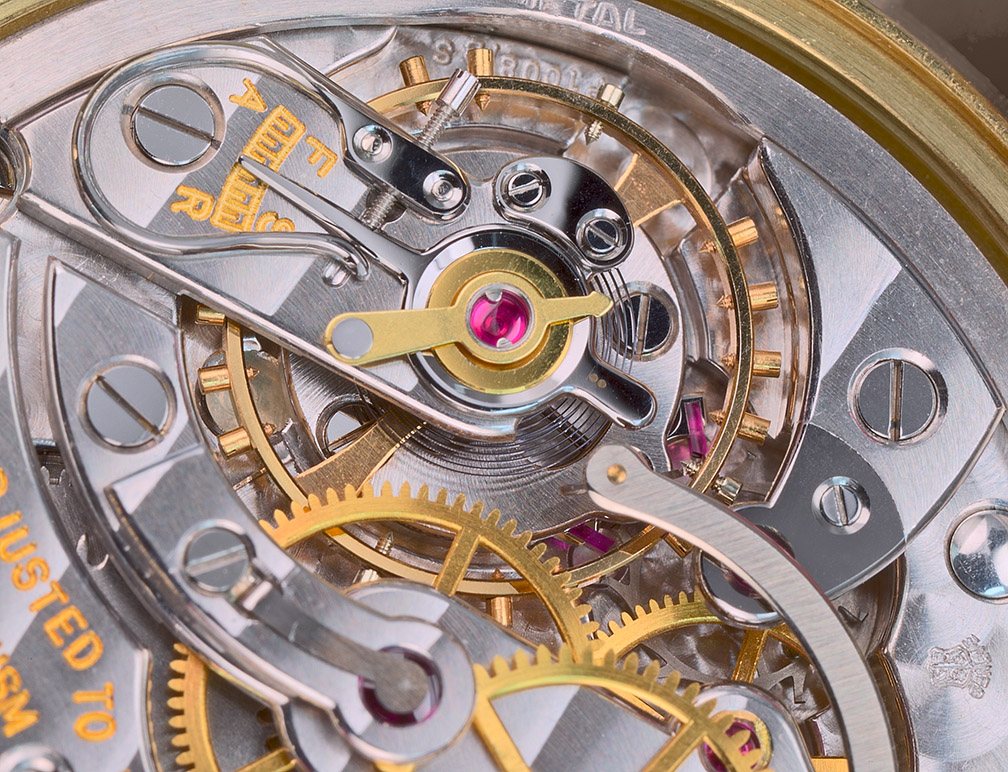
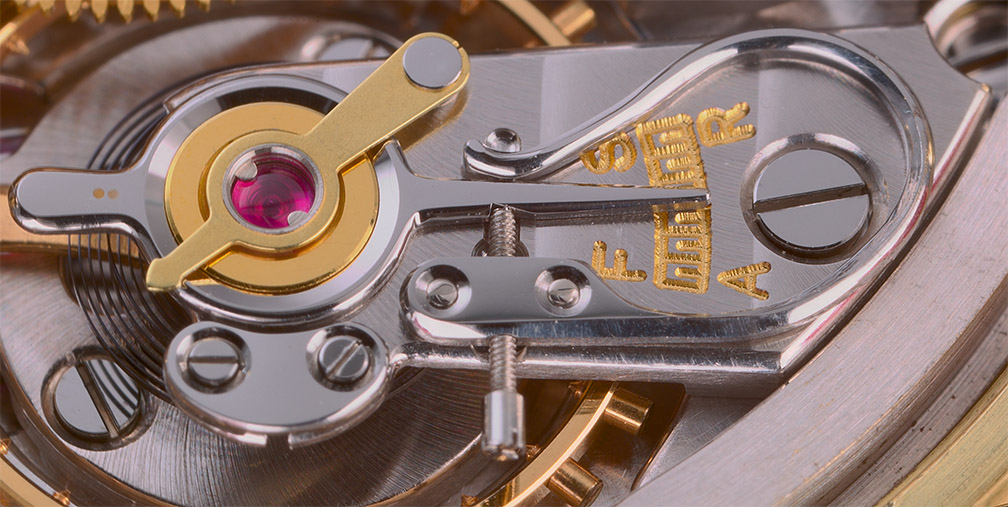
Another sublime touch, the black-polished and beveled anchor, wonderful attention to detail.
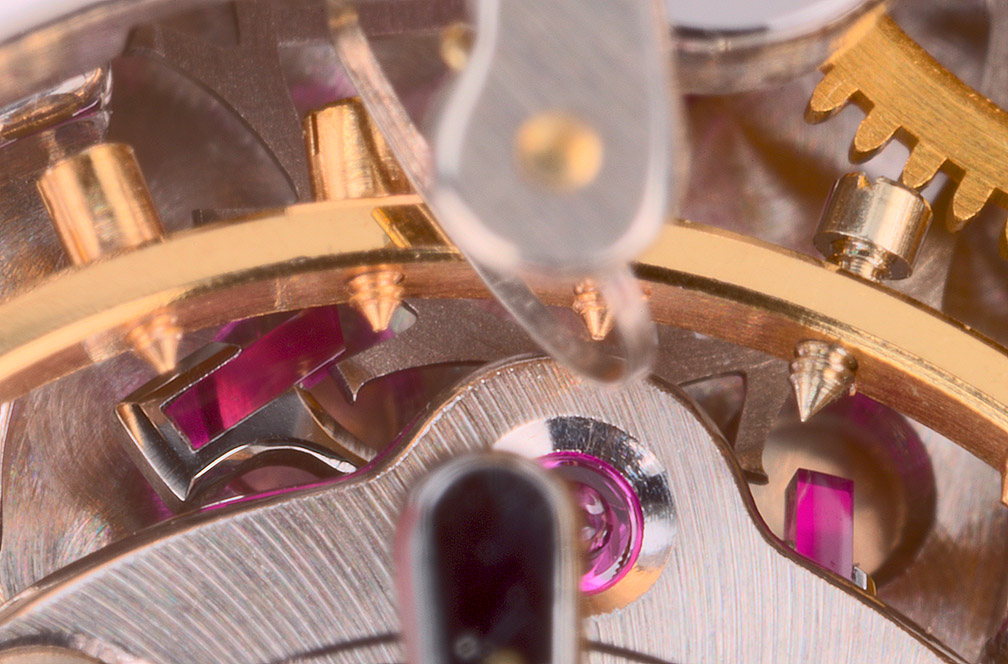
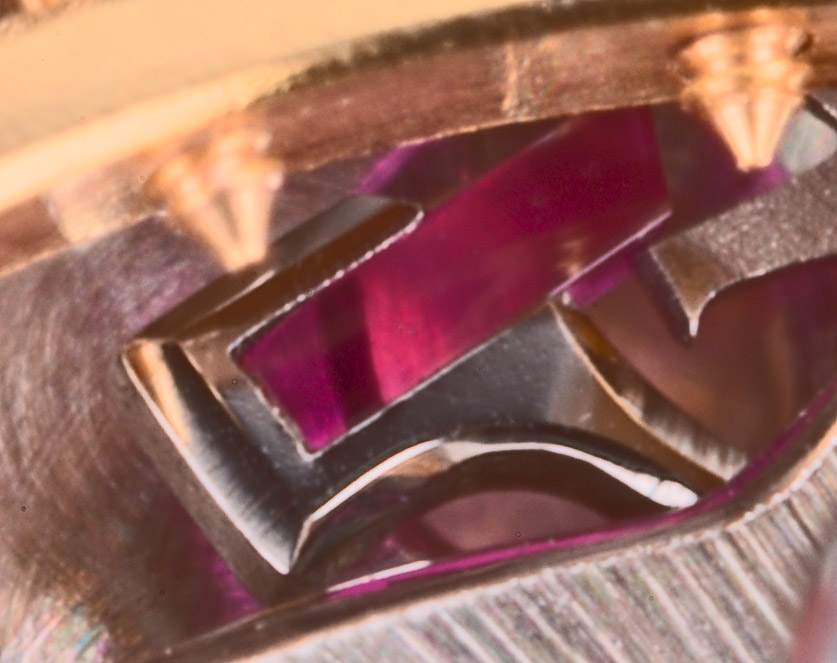
Elegant and streamlined profile:
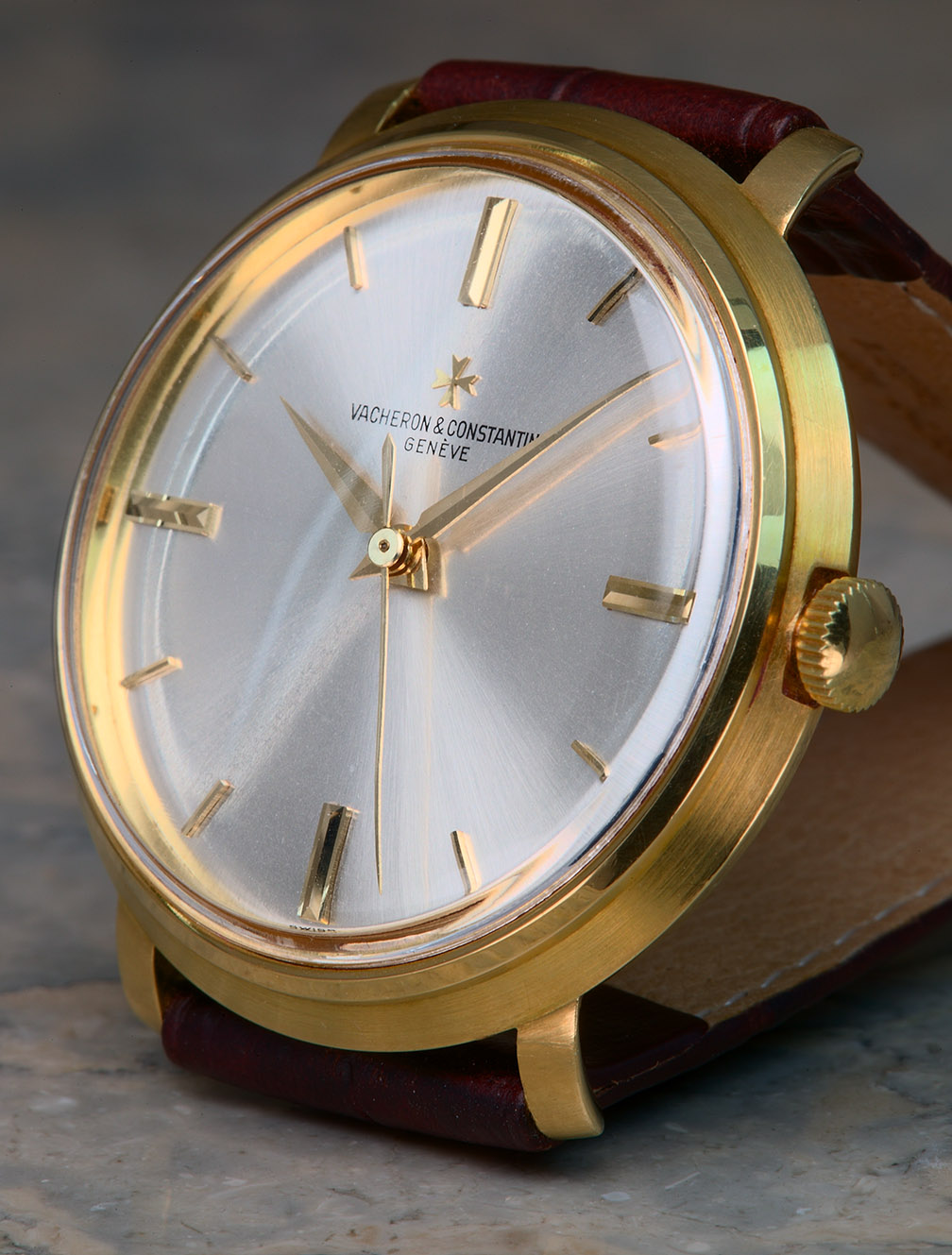

I hope you enjoyed this!
SteveG
April 24, 2006
All content Copyright asserted 2003, 2004, 2005, 2006